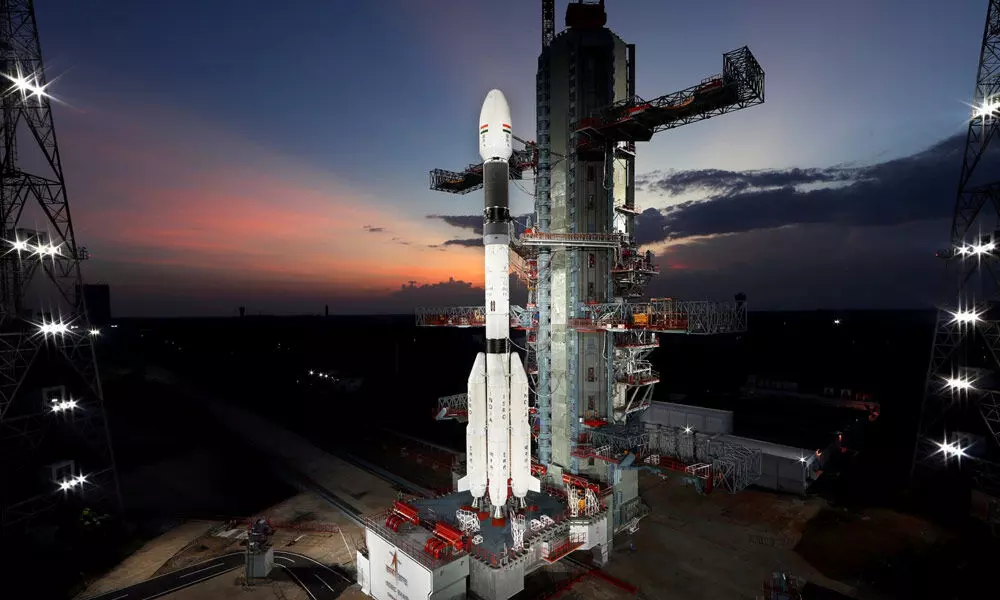Countdown begins for GISAT-1 launch
Once placed in geostationary orbit, the satellite will have a steady eye on the areas of interest -- moving in sync with the rotation of the earth and hence seeming stationary
image for illustrative purpose

Chennai: THE Indian space agency early morning on Wednesday began the countdown for the launch of its GSLV-F10 rocket carrying the country's first
Geo Imaging Satellite-1 (GISAT-1) renamed as EOS-03.
The 51.70 metre tall weighing 416 ton Geosynchronous Satellite Launch Vehicle -F10 (GSLV-F10) is scheduled to blast off from the second launch pad at the Sriharikota rocket port in Andhra Pradesh on Thursday at 5.43 a.m.
The rocket will be carrying the 2,268 kg earth observation satellite (EOS-03) or GISAT-1 and just over 18 minutes into its flight, the satellite will be placed at the geosynchronous transfer orbit (GTO). From the GTO, the satellite will be taken up to its final position firing its onboard motors, said India Space Research Organisation (ISRO).
The GSLV is a three stage/engine rocket. The core of the first stage is fired with solid fuel and the four strap-on motors by liquid fuel. The second is the liquid fuel and the third is the cryogenic engine. During the countdown, the liquid and cryogenic fuel will be filled. The rocket and the satellite systems will also be checked.
The GISAT-1 will be the country's first eye in sky or earth observation satellite to be placed in geostationary orbit. Once placed in geostationary orbit, the satellite will have a steady eye on the areas of interest -- moving in sync with the rotation of the earth and hence seeming stationary -- unlike other remote sensing satellites placed in lower orbit that can come over a spot only at regular intervals. Originally the GISAT-1 was slated for launch on March 5, 2020, but hours before the launch, the ISRO announced postponement of the mission owing to some technical glitch.
Soon after, the Covid-19 pandemic and the lockdown delayed the mission. The rocket had to be dismantled and cleaned up.
Subsequently, the GISAT-1 launch was slated for March 2021 but due to problems in the satellite's battery side, the flight got delayed again. With the replacement of the battery, the satellite and the rocket were being readied for their flight at Sriharikota when the second wave of Covid-19 swept in, affecting many at the rocket launch centre.
The Indian space agency had earlier said the 2,268 kg GISAT-1 would provide a realtime image of a large area of region of interest at frequent intervals. It will also enable quick monitoring of natural disasters, episodic events, and any short-term events. The satellite will have payload imaging sensors of six band multi-spectral visible and near infra-red with 42 metres resolution, 158 bands hyper-spectral visible and near infra-red with 318 metres resolution, and 256 bands hyper-spectral short wave infra-red with 191 metres resolution.

